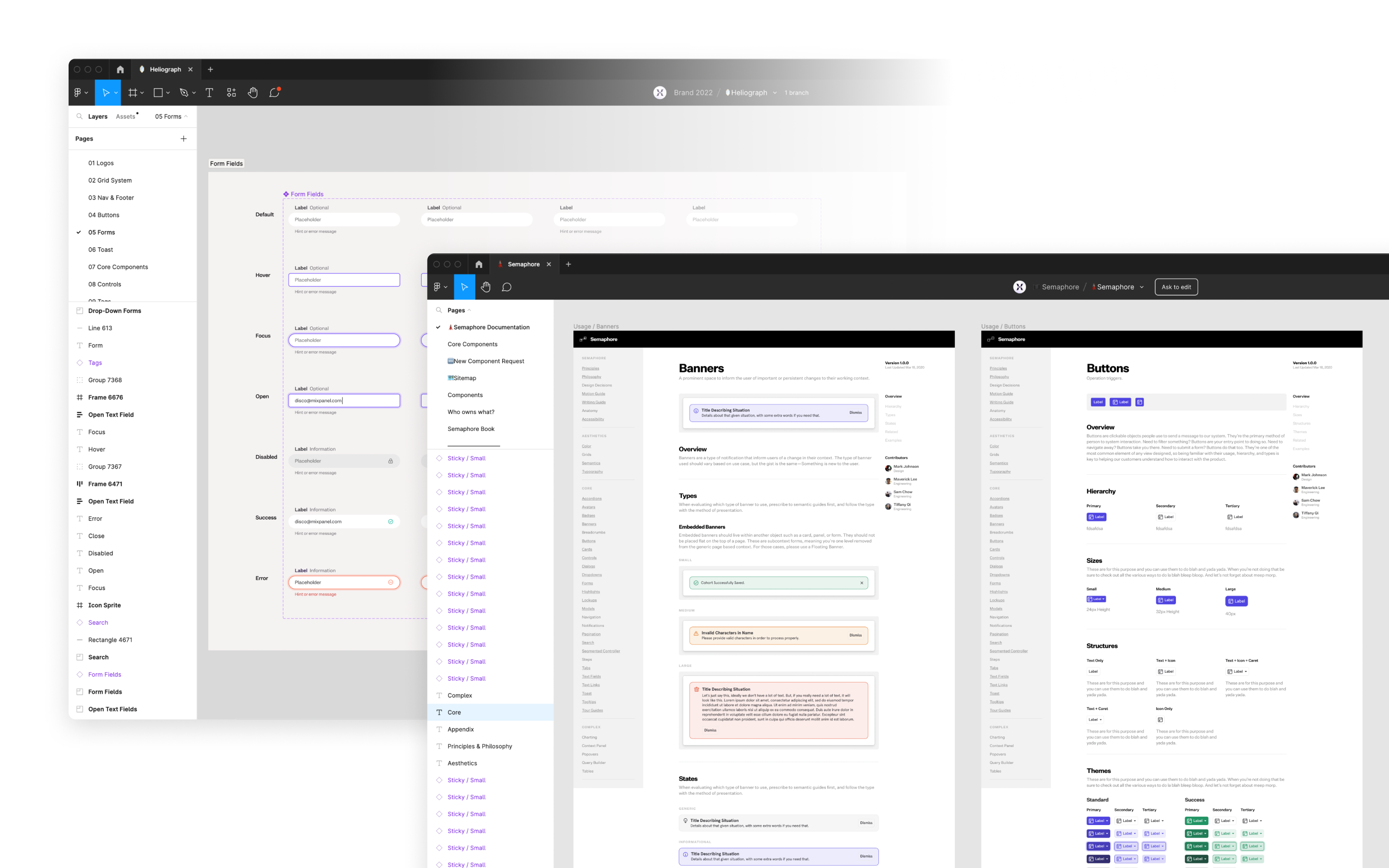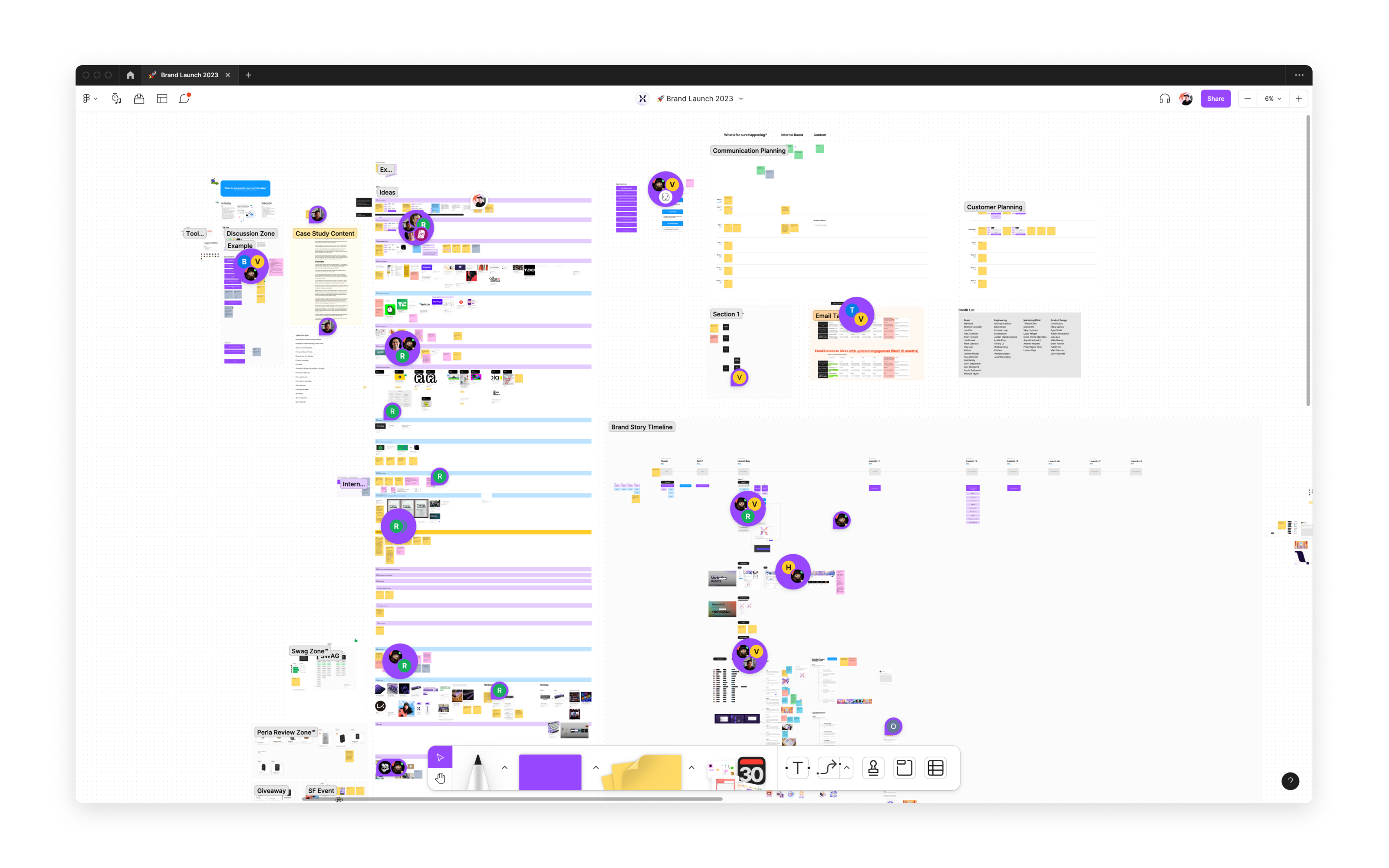How Mixpanel redefines analytics by growing data literacy
Since its founding in 2009, Mixpanel, the events analytics platform that powers over 8,000 global customers, has remained as dynamic as its product. Most recently, as the analytics industry has evolved with lower barriers to entry and increasing access to data, Mixpanel has responded to the changing landscape by engaging this new set of builders through a bold new brand.
For Mixpanel, their recent rebrand represented an opportunity to double down on data literacy and empower builders beyond the traditional definition of engineers and data analysts. It signified a shift in which data is no longer confined to a single siloed team, but instead available for everyone, from community organizers to marketers and product managers, to access, trust, and understand.
With Figma as the canvas, Mixpanel was able to return to fundamentals, prioritize consistency across its product, and ultimately implement this pivotal rebrand.

Laying the groundwork for the company’s next phase
As evidenced by the analytical depth they’ve built into their platform, Mixpanel’s focus has always been enabling more companies to answer more questions. However, like any tech company founded in 2009, they found themselves dealing with legacy processes and practices that just didn’t cut it anymore. Mixpanel knew they needed to refresh these processes to unlock faster and deeper analysis for customers, which meant returning to the fundamentals and taking a hard look at their tech stack.
Mixpanel’s tech stacks, which varied drastically by team, led to discrepancies in design languages and naming conventions, and exacerbated the inconsistencies within the product. Internally, these tech stacks translated to clunky workflows, numerous handoffs, and unnecessary silos. “We tried so many tools just to get our work on the same page. Ultimately, it all resulted in a breakdown of communication,” Alex Coleman, Mixpanel’s Director of Design, explains, “People were on completely different pages with teammates they were supposed to be working in symphony with. These vastly different tech stacks create a knowledge gap that you can't really cross.” Not to mention, the subscription fees of each tool in their tech stack, which included Sketch, Invision, Zeplin, Miro, and Abstract, simply added up. By streamlining their techstack and operating solely out of Figma, Mixpanel was able to increase their monthly savings by 5x.
A trustworthy product begins with a consistent user experience
The inconsistencies that existed within Mixpanel’s product were exacerbated by the industry they were in—one in which the growing availability of data underscored a growing need for data integrity. For Mixpanel, building out their design system represented an opportunity to create a cohesive user experience, and ultimately ensure a product their users could trust.
“We needed a fully integrated design system that’d help us connect teams and uplevel the quality of designs we ultimately shipped,” Alex shares.
Mixpanel turned to Figma, seeing it as the place where teams can create design systems that drive creativity and consistency across all teams. Designers at Mixpanel no longer had to recreate components from scratch and could rest assured that other teams like Brand were using the latest and greatest components, styles, and assets. Paul Jun, Principal Brand Strategist at Mixpanel, elaborates, “We’re using Figma for everything, from a whole new library of icons, typefaces, and layouts. We’re at this point now where I honestly don't know who's really a brand or product designer because they have the entire system and toolset to start making stuff.” By utilizing Figma for their design system, Mixpanel can save ~160 hours of work per week on the design team.
With Figma, Mixpanel can create a powerful product experience that’s not just consistent, but one that their users can trust.

Becoming the brand for builders
To pull off a bold company rebrand that could speak to a broader set of builders, Mixpanel needed a place to collaborate across the entire company from ideation to launch, while enabling them to work with their existing design libraries in Figma (get inspired by their publicly available Annotation and Moodboard templates!)
For Mixpanel, FigJam, Figma’s online whiteboard solution, played a critical role in their brand and product rebrand, not only because it could bring together leadership, brand, marketing, support and so forth, but it also created a space for teams to collaborate throughout the product development process. As Vijay Iyengar, Mixpanel’s Director of Product shares, “FigJam helped product communicate visually. Especially for early stage product thinking, a canvas is less restrictive and enables more creativity than a doc.” For a rebrand of this magnitude, Mixpanel needed a tool that could allow them to dream big.

FigJam helped Mixpanel drive alignment from their CEO to individual contributors, while encouraging greater feedback and engagement. “FigJam gives people a voice. Not everyone is going to be as vocal and talkative like me. Some designers want to express their ideas with shapes and language and color. And [FigJam] effortlessly allows for that; it allows for them to come in with a really big idea and share in a way where everyone can understand where they're coming from,” explains Paul.
Throughout the rebrand process, leveraging both Figma and FigJam unlocked cross-collaboration that ultimately drove a consistent user experience. No longer working in silos, teams at Mixpanel could zoom out, see the full experience from product to brand, and understand how the various touchpoints mapped for their customers. This was the magic of designers, engineers, brand strategists, and marketers working together in one place.

For Mixpanel, it’s not just about the numbers. It’s about building an analytics platform their customers can trust, establishing a brand that speaks to builders across more disciplines, and cultivating a culture that allows for more voices and stronger ideas. With Figma and FigJam, they’re making progress possible for builders everywhere.
The Total Economic Impact of Figma
This Forrester report shows how teams are using Figma to speed up their workflows, consolidate their design stack, and build better products.




